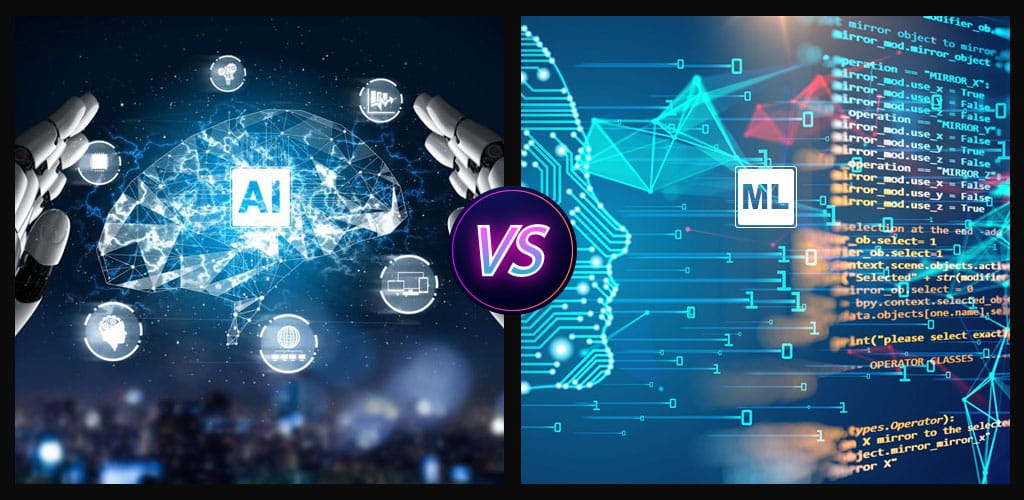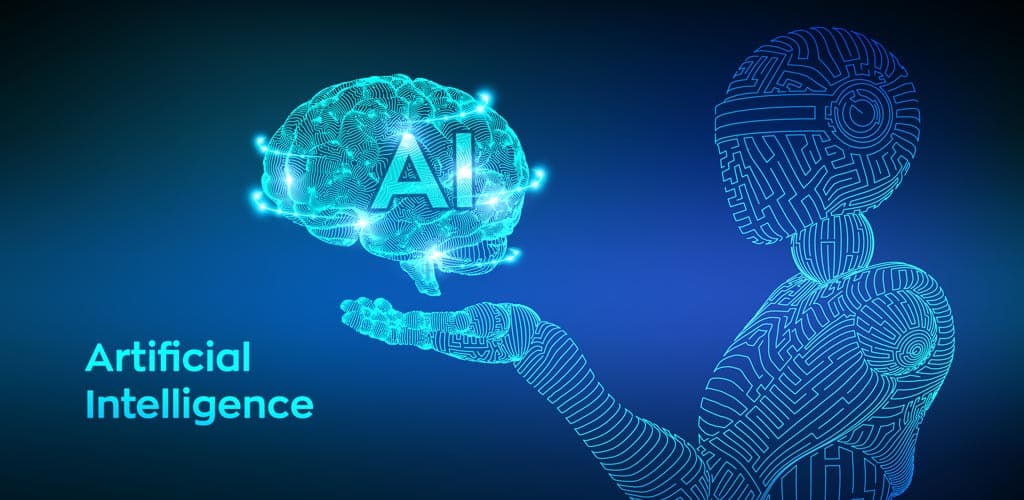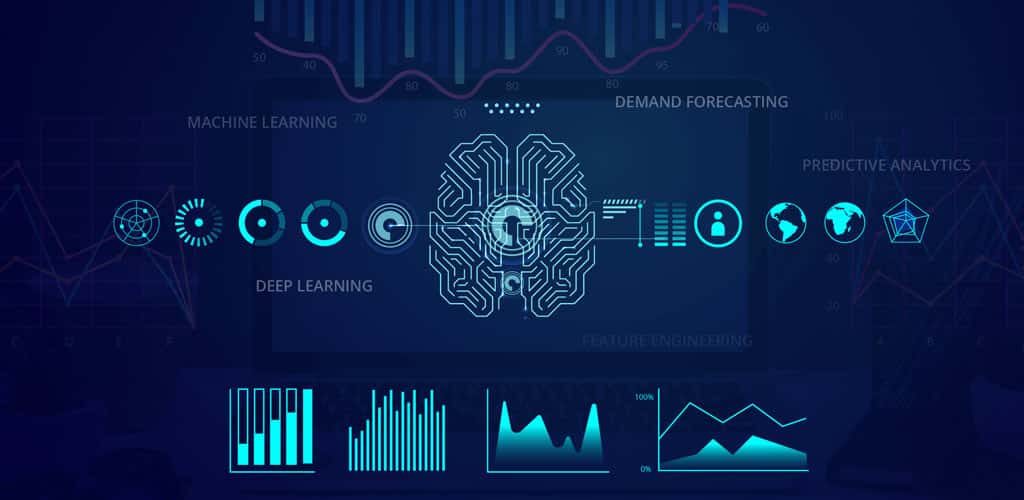
If we talk about the most common buzzwords in today’s technological landscape, two terms that would surely pop up are: Artificial Intelligence and Machine Learning. These are the emerging technological inventions that are being used in different solutions and revolutionizing the businesses and organizations of today’s date. Despite the fact that the terms, Artificial Intelligence (AI) and Machine Learning (ML) are used interchangeably, they are different. And that is our topic of discussion: Artificial Intelligence vs. Machine Learning.
Since both of these terms are used interchangeably, it can lead to some confusion. This is the reason why we are here with a detailed comparison between these two inventive and intuitive technologies.
When we discuss Analytics, Big Data or some other extensive technological upsurge that are reshaping the technological world, we use these terms more frequently than ever. So, let’s intersect both of them and see how different they are from each other and also how they are connected to each other.
What is Artificial Intelligence?

In simpler terms, AI or Artificial Intelligence is the engineering and science, which makes it possible to make the machines do such things that we used to think only humans can do. While this is a good way of defining AI in one sentence, it actually cannot be defined so easily!
AI is a vast concept and a single line will keep it vague. AI has a progressive definition than a static one! One example can sort it out for you:
If we think about a time before 50 years, a chess-playing computer program was considered one form of AI application since the game strategies and theories were deemed only as human qualities or capabilities. But in the present time, the chess game is found on every computer OS, which is why with the progression of time, the concept of AI has changed!
According to Zachary Lipton, Researcher and Assistant Professor at CMU, the term AI is basically a moving target that are grounded on the qualities humans possess but machines don’t.
Artificial Intelligence is a vast concept that has a lot of sub-concepts within it. And one of them is Machine Learning. If we talk about the past concepts of AI, it used several different techniques, such as Deep Blue, which used tree search algorithm that helped defeat the world’s chess champion in 1997. This concept was used to calculate millions of moves at every single turn.
In the present time, AI is hugely used in human-machine interaction with gadgets like Alexa, Siri, and Google Home. There are continuous advancements being placed when it comes to AI, and it is becoming more household every passing day. In a nutshell, AI is a technology that is built to enhance the capabilities of machines and humans, and as a result, improving the productivity.
What is Machine Learning?

As we said before, Machine Learning is a branch of Artificial Intelligence, which is a computer algorithm that assists the computer programs in continuously improvement through experience. Machine Learning is one of the most convenient ways we have at the moment to achieve the heights of AI. It works by scrutinizing and comparing the data on datasets (small and large) in order to detect the common patterns and explore the nuances.
To give an example of this, we would like to mention YouTube, Spotify, Netflix, etc. that recommends you videos as per your taste and a lot of the time, those recommendations are correct! Now, think about a machine learning model, provided to you along with a lot of songs you love. Moreover, the corresponding statistics and data of those songs are also given, such as (genre, tempo, instrumentality, dance-ability, etc.). Now, through the machine learning mechanism, the model would offer you a set of recommendations that you may like (after following the common pattern of the songs).
If we go further to tell you another application of Machine Learning, it will be even more interesting! For instance, you create a machine learning model with a large dataset of X-Ray pictures alongside their descriptions like considerable items, symptoms, etc. Now, with the power of ML, it can be possible to assist (and probably automate) in the X-Ray pictures’ data analysis.
The machine learning system examines every single picture with its dataset in order to find the patterns that are common in the pictures for comparable indications.
The machine learning model we talked about above is called ‘Supervised Learning.’ Also, there’s another type of machine learning, called ‘Unsupervised Learning.’ While the Supervised Learning is all about modeling the dependencies and relationships between input and output features to predict the values of the output data, Unsupervised Learning does not have output labels or categories on the data.
Machine Learning is an outstanding invention and technology that is surely reshaping and will reshape how machines work. Machine Learning gets even more interesting when it comes to the sub-branches like Neural Networks and Deep Learning. It is not possible to cover these two sub-branches in this article as there is a lot to explain, but we can surely tell you that machine learning and its sub-branches are mimicking the human brains a little more on a daily basis.
Reason Why AI and ML are Used Interchangeably
Contrary to the belief of many that Artificial Intelligence is a new technology, it has been around in the market for quite some time. As per the official report, the term, ‘Artificial Intelligence’ came into existence in the year of 1956, coined by a group of researchers that included Herbert A. Simon and Allen Newell.
The early days
Though there was a significant amount of hype built surrounding AI in the early days, and scientists though that Artificial Intelligence was around the corner, the lack of any solid confirmation led to a lack of investment and interest in the AI industry.
Afterwards
Later, the majority of the organizations went on separating the term, ‘Artificial Intelligence’ from themselves. And the companies used different terminologies to refer their AI work, such as Deep Blue of IBM, which was described as a supercomputer that did not use AI whereas AI was implemented. Among the other terms that were gaining popularity, some mentionable are Machine Learning, Predictive Analysis, and Big Data.
The rise of Machine Learning
During the year 2012, Neural Networks, Deep Learning, and Machine Learning became highly popular, and organizations found great use of them in different fields. Consequently, Deep Learning and Machine Learning became two popular terms for using in the product advertisements.
Tasks that seemed impossible till then became achievable with the use of Deep Learning. Then-futuristic functionalities like image classification, face and speech recognition, and natural language processing became way easier to develop.
Back to AI
In today’s world, we see a market full of AI-powered software, which include deep learning and machine learning. So, the shift through technologies and different terminologies has been there but AI has always been the talk of the town in one name or another.
Concluding
It may seem that AI and machine learning is the same thing but as you have gone through our blog post, both of them are different despite being interrelated. Both of these terms may be used interchangeably, but they do have a separate meaning and implementation. While machine learning is all about providing the machines a human intelligence to learn, AI takes care of bigger things that include machine learning.






